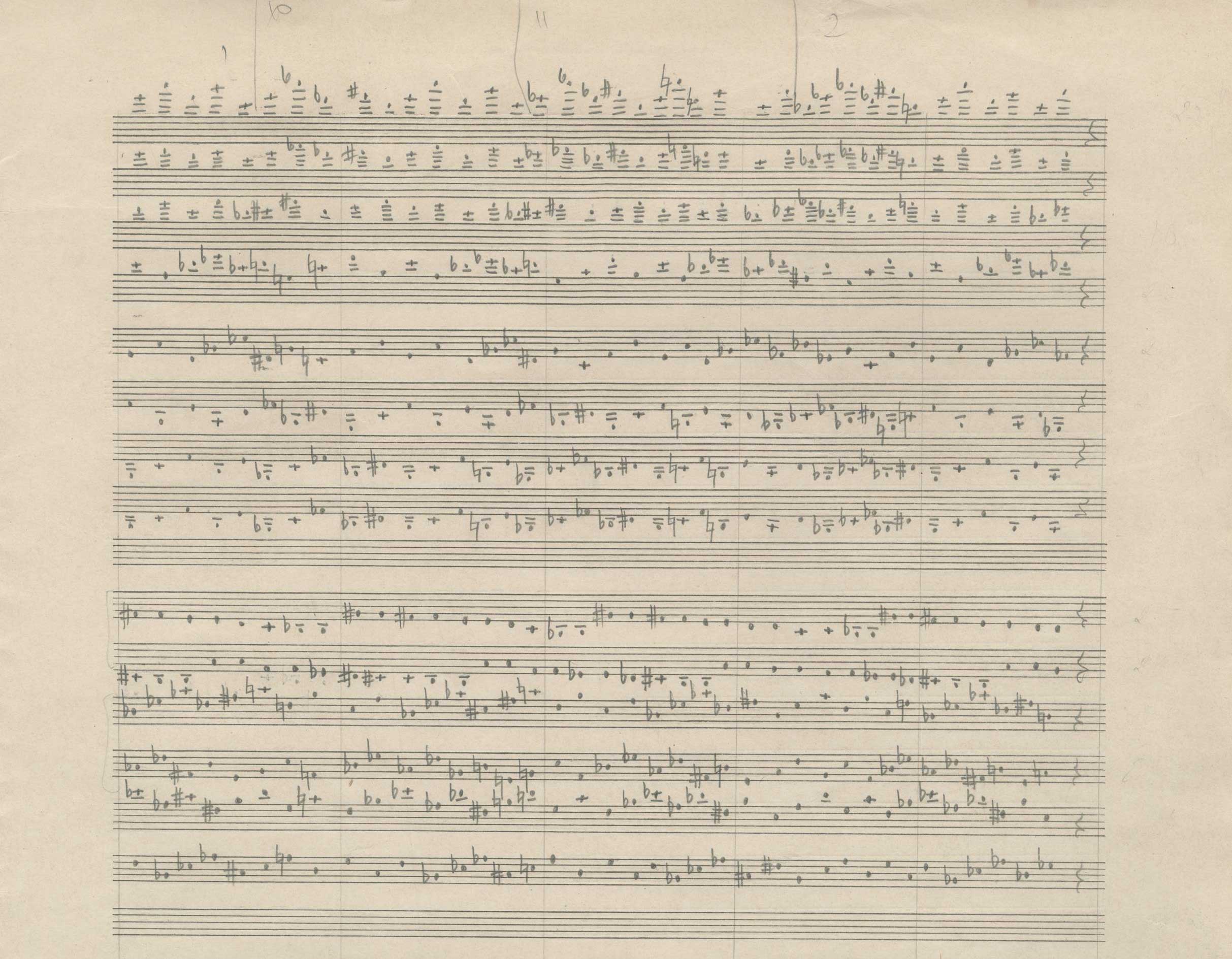Scored for
piano, mixed choir (SATB) and symphony orchestra
Duration
12 min
Short description
Credo (Latin for “I believe”) is one of the most important and dramatic collage pieces in Pärt’s career. It marks the summary of his early work and is also a key to understanding his stylistic turn and subsequent compositions. As in Pärt’s other compositions from the 1960s, the musical material of Credo combines elements of dodecaphony, sonorism, collage and aleatory technique. This, however, was the first time his music was based on a holy text that became the foundation for the musical structure of the entire piece.
The underlying text for Credo is in fact itself a collage. Pärt has combined a phrase from the Christian Statement of Faith, “I Believe in Jesus Christ”, with an excerpt from the Sermon on the Mount in the Gos…
World premiere
16.11.1968
Estonia Concert Hall, Tallinn, Estonia
Symphony concert
Neeme Järvi (conductor), Mart Lille (piano), Estonian Television and Radio Mixed Choir , Estonian Radio and Television Symphony Orchestra
Completion year
1968
Scored for
piano, mixed choir (SATB) and symphony orchestra
Duration
12 min
Publishers
Universal Edition
Language
Latin
Instrumentation details
symphony orchestra: 4234, 4431, percussion, strings
Vocal text
Fragment of the Creed and Matthew 5: 38-39
Credo in Jesum Christum.
Audivistis dictum: oculum pro oculo, dentem pro dente.
Autem ego vobis dico: Non esse resistendum injuriae.
Credo.
I believe in Jesus Christ.
Ye have heard that it hath been said, An eye for an eye, and a tooth for a tooth.
But I say unto you, That ye resist not evil.
I believe.
Credo in Jesum Christum.
Audivistis dictum: oculum pro oculo, dentem pro dente.
Autem ego vobis dico: Non esse resistendum injuriae.
Credo.
I believe in Jesus Christ.
Ye have heard that it hath been said, An eye for an eye, and a tooth for a tooth.
But I say unto you, That ye resist not evil.
I believe.
